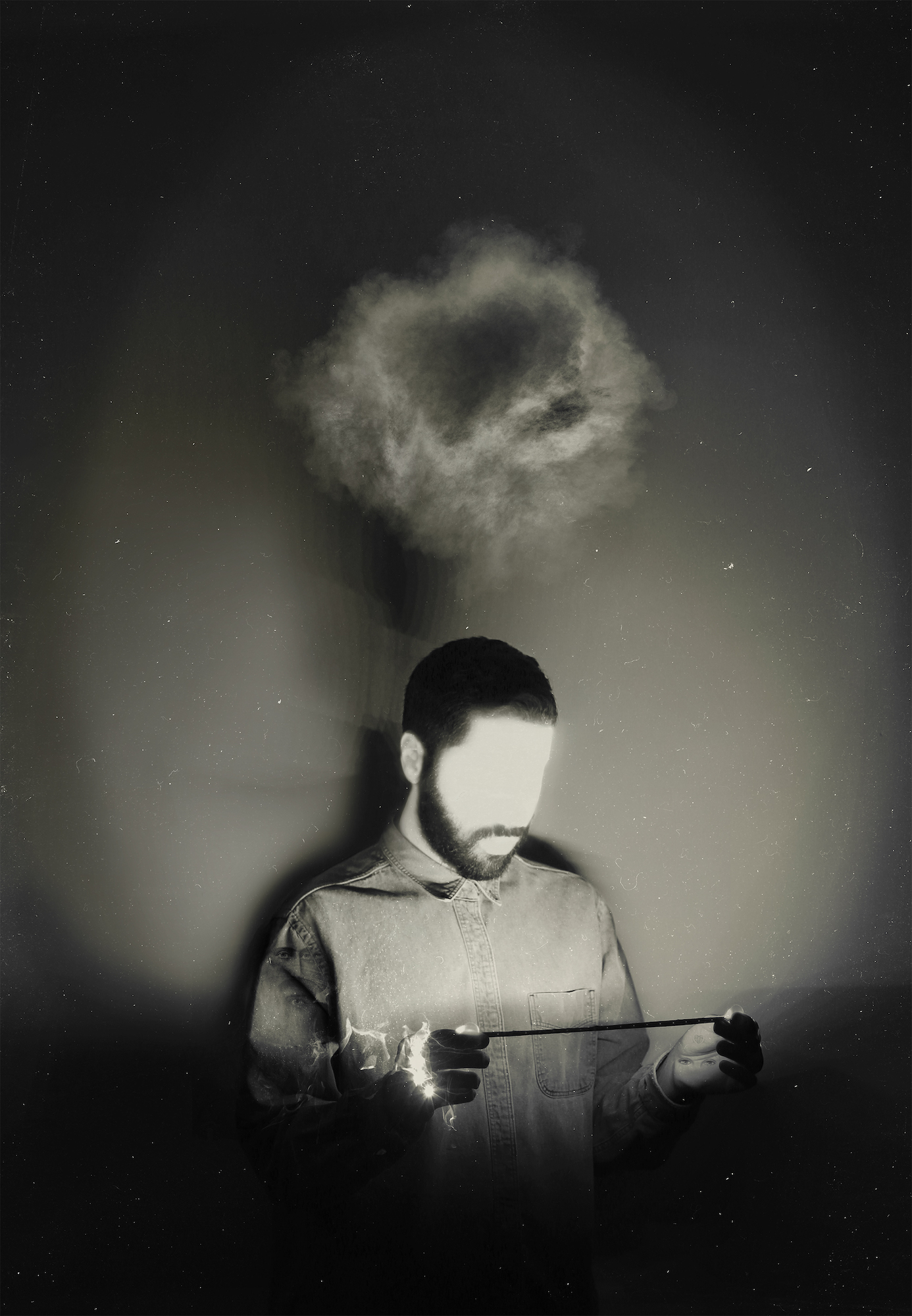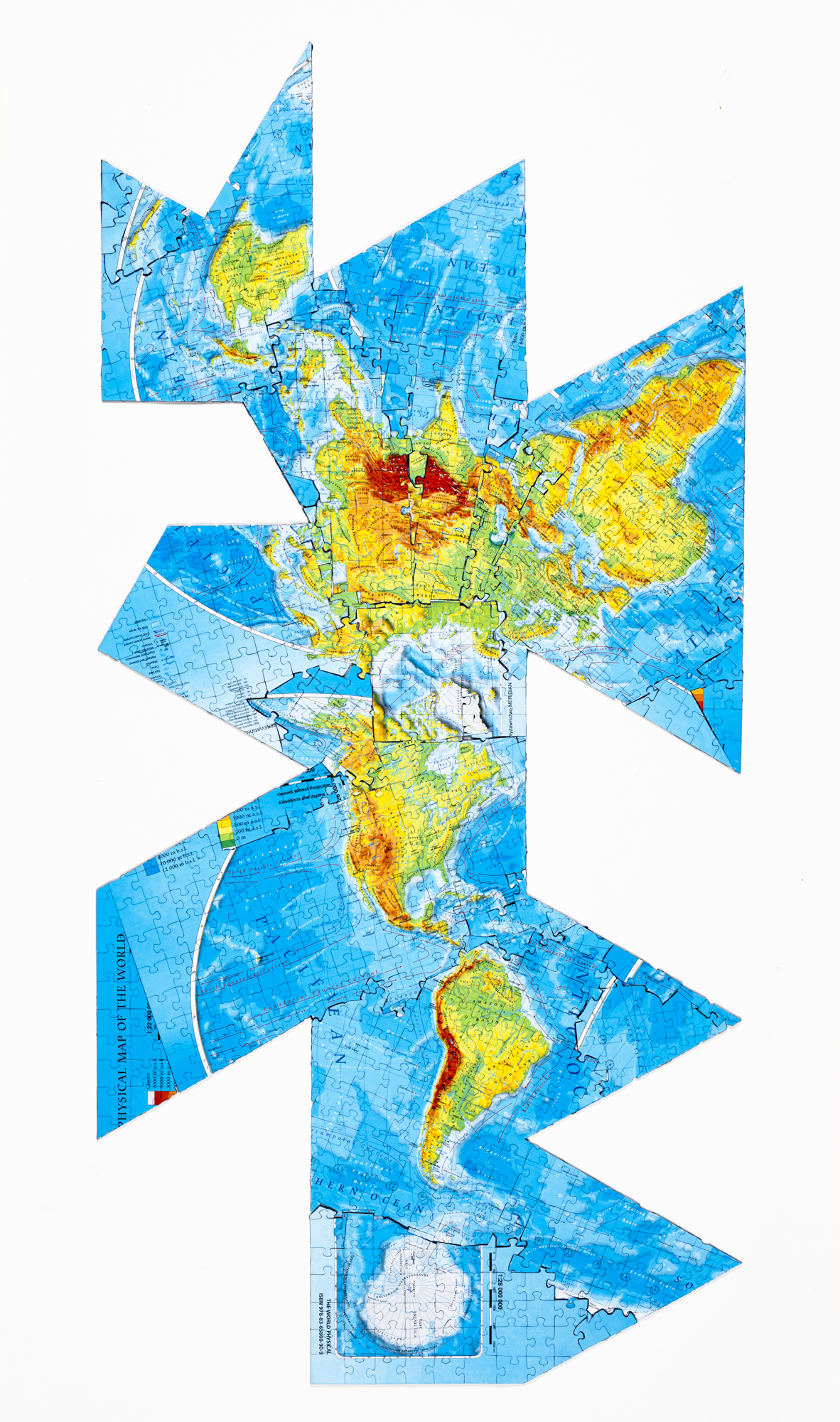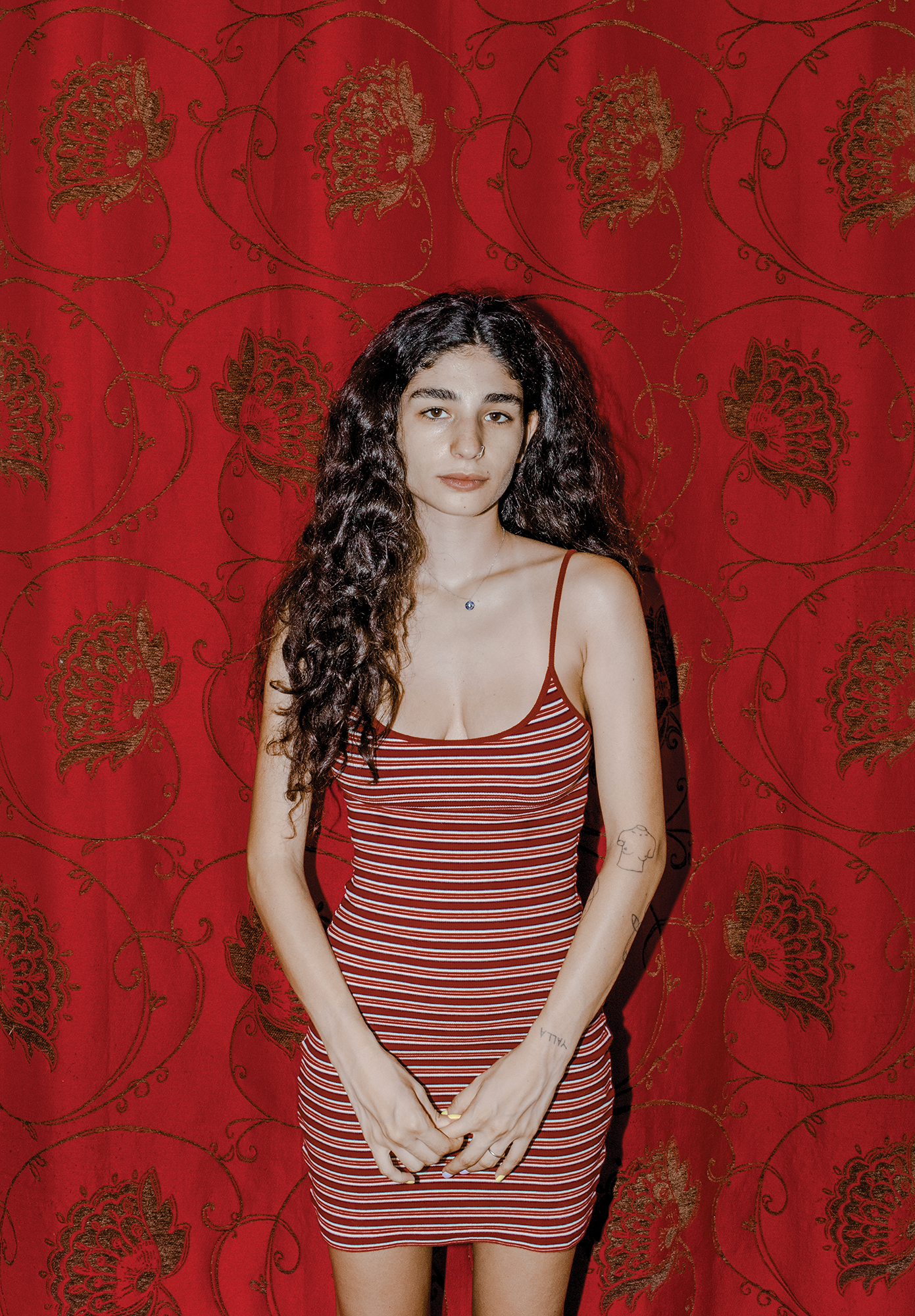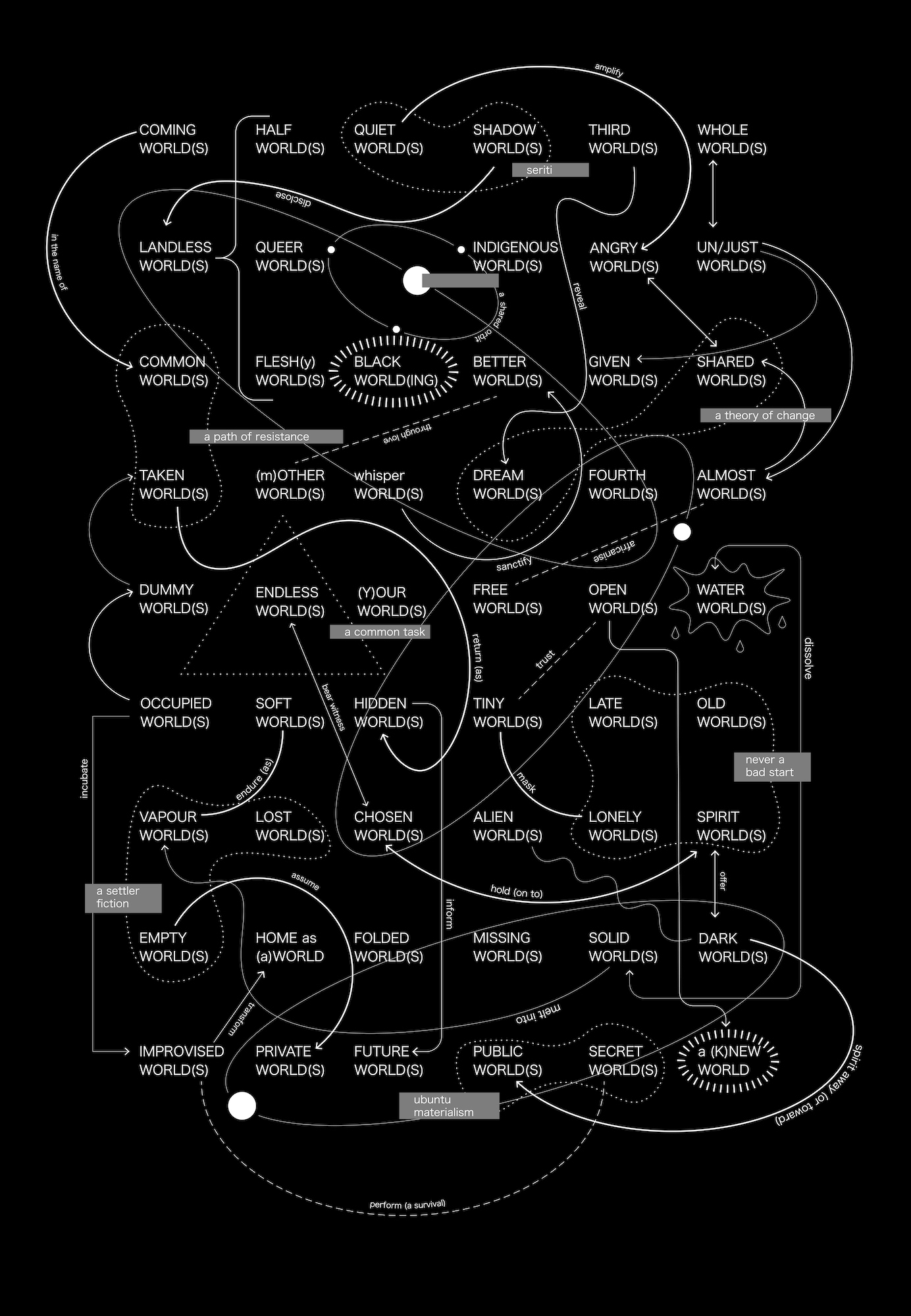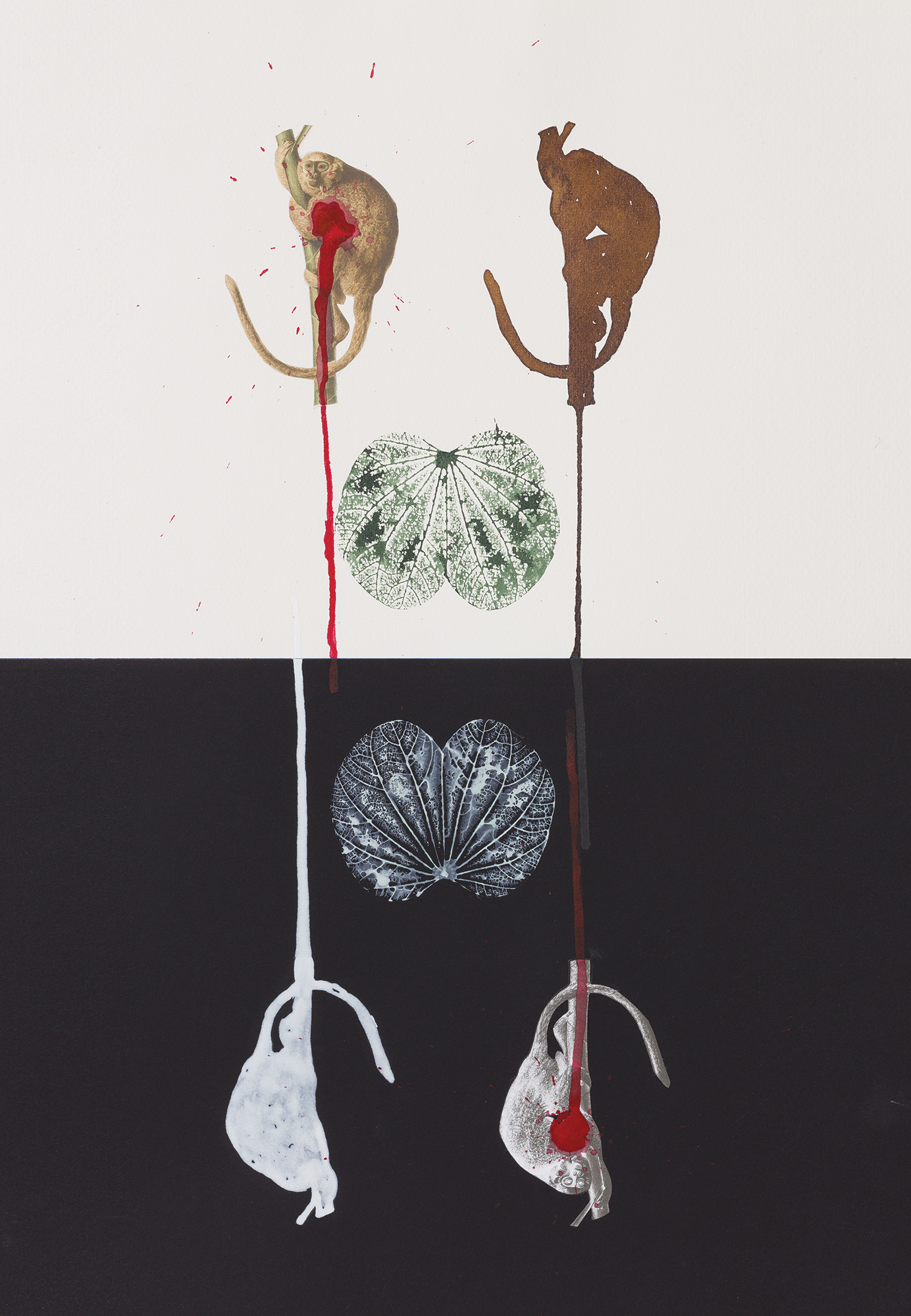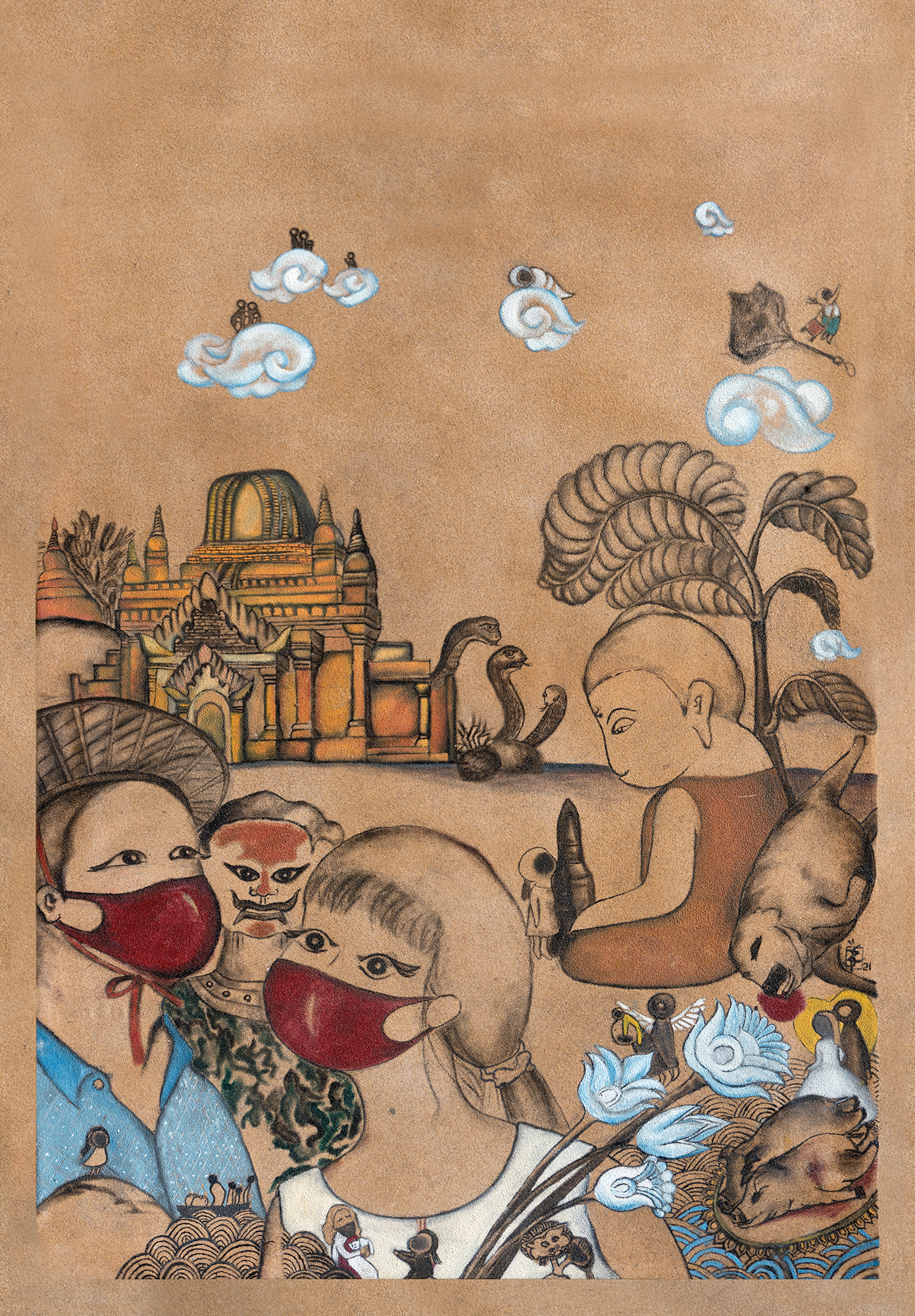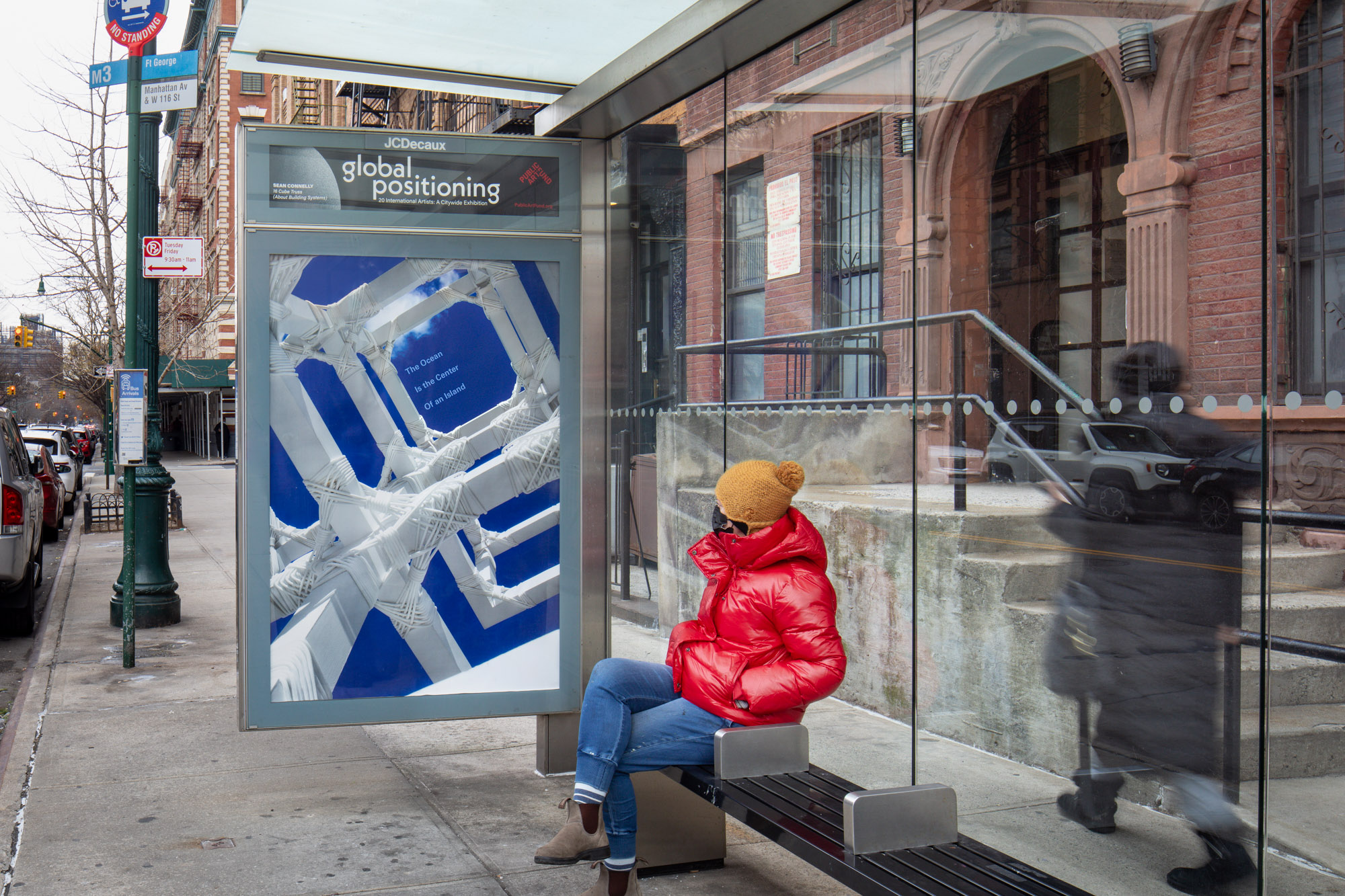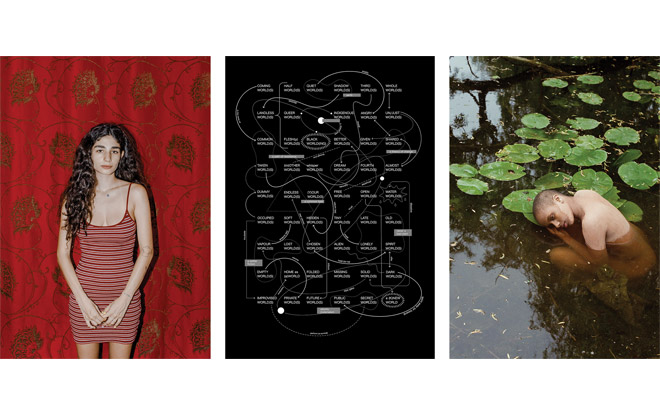About the Exhibition
Shared vulnerability has united the world, yet the pandemic has also revealed and sharpened many divisions. Both direct and indirect effects have been unequally distributed among demographic groups, communities, and regions. After a second year of the pandemic, how do we begin to understand our reshaped lives and world? What perspectives might be offered by artists from different cultures and locations?
Global Positioning presents new artworks by an intergenerational group of 20 artists from 17 countries exhibited on 320 JCDecaux bus shelters throughout New York City, Chicago, and Boston. These creative voices span disparate regions across six continents including the Amazon rainforest in Colombia; the desert lands of the Indulkana Community in Central Australia; the West African port city of Accra, Ghana; and Yangon, Myanmar, where in 2021 the military brutally seized control. Embracing our global community, the exhibition aims to provide points of cultural reconnection with the world beyond our borders.
Processing this turbulent period with a blend of thoughtfulness, hope, incisiveness, and wit, these newly commissioned works illustrate a common impulse to create, communicate, and imagine a future of possibility. Shared themes emerge across a number of the artists’ contributions. Environmental concerns highlight a sensitivity to the growing impact of the climate crisis. Several artists explore relationships between indigenous forms of knowledge and popular culture in a globalized world. Images that register conflict and anxiety are also imbued with fantasy, humor, and spirituality. Traversing boundaries of culture, language, history, and politics, the remarkable works created for Global Positioning ultimately reveal our shared humanity.
Global Positioning is curated by Public Art Fund Artistic & Executive Director Nicholas Baume, Public Art Fund Curator Daniel S. Palmer, and Public Art Fund Associate Curator Katerina Stathopoulou.
Artists
Walid Al Wawi (b. 1988, Palestine / Jordan; lives in London, United Kingdom and Dubai, UAE), Tony Albert (b. 1981, Townsville, Australia; lives in Brisbane, Australia), Myriam Boulos (b. 1992, Beirut, Lebanon; lives in Beirut, Lebanon), Lastenia Canayo (b. 1962, Roroboya, Peru; lives in Coronel Portillo, Peru), Sean Connelly (b. 1984, O‘ahu, Hawai‘i; lives in Honolulu, Hawai‘i), Nolan Oswald Dennis (b. 1988, Lusaka, Zambia; lives in Johannesburg, South Africa), Zoncy Heavenly (b. 1987, Tanintharyi, Myanmar; lives in Yangon, Myanmar), Ali Kazim (b. 1979, Pakistan; lives in Lahore, Pakistan), Dada Khanyisa (b. 1991, Umzimkhulu, South Africa; lives in Cape Town, South Africa), Pushpa Kumari (b. 1969, Madhubani, India; lives in India), Karam Natour (b. 1992, Nazareth, Israel; lives in Tel Aviv, Israel), Rosana Paulino (b. 1967, São Paulo, Brazil; lives in São Paulo, Brazil), Denisse Ariana Pérez (b. 1988, Santiago, Dominican Republic; lives in Barcelona, Spain), Jason Phu (b. 1989, Sydney, Australia; lives in Melbourne, Australia), Abel Rodríguez (b. 1941, La Chorrera – Amazonas, Colombia; lives in Bogotá, Colombia), Kwan Sheung Chi (b. 1980, Hong Kong; lives in Hong Kong), Chen Wei (b. 1980, Zhejiang, China; lives in Beijing, China), Kaylene Whiskey (b. 1976, Mpartnwe (Alice Springs), Australia; lives in Indulkana, Australia), Vasantha Yogananthan (b. 1985, France; lives in Marseille, France), and Rufai Zakari (b. 1990, Accra, Ghana; lives in Accra and Bawku, Ghana).
Curatorial Process and Nominators
Public Art Fund curators invited a group of 26 colleagues to submit names of artists for consideration. Deepening connections with international peers, the nominator group included curators, artists, and educators with expertise in different regions and artistic disciplines. The 20 artists ultimately invited to participate in Global Positioning were drawn from a larger pool combining these nominations and others from Public Art Fund curators. They hail from Africa, the Middle East, Oceania, the Americas, South and East Asia, and Europe. Working in a range of mediums spanning embroidery, sand painting, collage, drawing, digital and graphic illustration, and photography, each has created a striking new work for Global Positioning. Exhibition images of all works have been digitally printed with UV ink on coated paper.
Nominators: Farah Al Qasimi, Artist, New York City; Brook Andrew, Artist and Artistic Director of the 2020 Sydney Biennale, Melbourne and Paris; Anton Belov, Director of Garage Museum of Contemporary Art, Moscow; Clothilde Bullen, Curator and Head of Indigenous Programs, The Art Gallery of Western Australia; Zoe Butt, Artistic Director of the Factory Contemporary Arts Centre, Ho Chi Minh City; Diana Campbell Betancourt, Artistic Director, Samdani Art Foundation, Dhaka; Iftikhar Dadi, John H. Burris Professor and Chair, Department of History of Art, Cornell University, Ithaca; Natasha Ginwala, Associate Curator, Berliner Festspiele, Gropius Bau, Berlin; Julieta González, Artistic Director, Inhotim, Brazil; Ana Janevski, Curator, Department of Media and Performance, Museum of Modern Art, New York City; Inés Katzenstein, Curator of Latin American Art, Museum of Modern Art, and Director of the Patricia Phelps de Cisneros Research Institute for the Study of Art from Latin America, New York City; Adam Khalil, Artist, New York City; Omar Kholeif, Director of Collections and Senior Curator, Sharjah Art Foundation, Sharjah; Solvita Krese, Director of Latvian Center for Contemporary Art, Riga; Venus Lau, Artistic Director of the K11 Art Foundation, Shanghai and Taipei; Khanya Mashabela, Curator at Norval Foundation, Cape Town; Jose Carlos Martinat Mendoza, Artist, Lima; Humberto Moro, Deputy Director of Program, Dia Art Foundation, New York; Wangechi Mutu, Artist, Nairobi and New York City; Larry Ossei-Mensah, Curator and Co-founder of ARTNOIR, New York City; Maria Elena Ortiz, Curator at the Pérez Art Museum Miami, Miami; Bhavisha Panchia, Curator, Johannesburg; Florencia Portocarrero, Curator, Lima; Chen Tamir, Curator at the Center for Contemporary Art, Tel Aviv; Murtaza Vali, Adjunct Curator at the Jameel Arts Centre, Dubai; Anshika Varma, Photographer and Curator of Kathmandu Photo Festival 2018, New Delhi.
Artist Statements
Walid Al Wawi (b. 1988, Palestine / Jordan; lives in London, United Kingdom and Dubai, UAE)
Oral History, 2021
Digital print
Courtesy of the artist
A sentence in Arabic and English mimicking the aesthetics of a domestic black and white inkjet print is exhibited in a commercialized and public access setting. Oral History is a textual oxymoron highlighting the gullibility of historical narratives and multilingual socio-political dialogues in regards to globalization and its ever-hybridized understanding of identity.
The text, written in a basic and simplified font may demonstrate an easily accessible readability to the viewer, yet contains a linguistic abstraction that questions the power structure in a post-colonial tongue as well as “absolute” connectivity in multilingual communities.
Tony Albert (b. 1981, Townsville, Australia; lives in Brisbane, Australia)
Unpacking History – A Native Australian Bouquet for New York, 2021
Acrylic and vintage appropriated fabric on Arches paper
Courtesy the artist and Sullivan+Strumpf, Sydney
I am an Aboriginal Australian artist who acknowledges the complex histories of national artistic heroes. By reclaiming objects haunted by trauma and shame, I implore viewers not to forget the histories they embody, but begin constructive conversations that can heal past wounds and offer hope. In this image I dissect 20th-century Australian artist Margaret Preston’s iconography with a reverse ethnography, using my personal collection of appropriated Aboriginal fabrics—popular within the tourist sector. As one of the iconic creators of Australian art, Preston was inspired by Aboriginal art and believed that it was essential to establishing a visual language that reflected Australia’s landscape and soul.
Myriam Boulos (b. 1992, Beirut, Lebanon; lives in Beirut, Lebanon)
Fantasies, 2021
Digital photograph
Courtesy the artist
This is the first work in a series that documents women’s fantasies in Lebanon. While women’s fantasies have mainly been portrayed through the male gaze, in this series, women are the ones talking about their own fantasies, owning them, taking back what belongs to them.
I made an open call that said: “If you identify as a woman and want to share your fantasies, send me an e-mail.” I asked the women who contacted me to choose how they wanted to be photographed and where, if they wanted to be present in the image or not, what they wanted to hide or show.
The images are not an illustration of the fantasy. They are a collaboration and a conversation between us. This first person that I photographed told me she felt represented, rather than exposed, which is one of my goals for this series.
Lastenia Canayo (b. 1962, Roroboya, Peru; lives in Coronel Portillo, Peru)
The Owner of the Ayahuasca, 2021
Embroidery
Courtesy the artist and Revolver Galeria
The Ayahuasca is a very important part of my culture and is used to heal the sick. This knowledge comes in the form of visions. I thought for a long time about how to draw and represent the spirit of the Ayahuasca. It took me many days to talk to and see it in my dreams. It was not easy. I waited a long time. I felt I received a great wisdom from the spirit of the Ayahuasca, I received a lot of positive energy.
Sean Connelly (b. 1984, O‘ahu, Hawai‘i; lives in Honolulu, Hawai‘i)
16 Cube Truss (About Building Systems), 2021
Digital print
Courtesy Sean Connelly, After Oceanic
With the phrase “The Ocean is the Center of an Island” I ask the viewer to reconsider everything we know about the environment. Land is not separated by the ocean but connected by it. We must interrupt systems of trauma that oppress indigenous thinking and degrade our environment so that we can heal, care for the life of the places we live, and thrive. The sculpture, 16 Cube Truss (About Building Systems), featured in this photograph is a vision of healing. The sculpture creates a moment to observe the Indigenous technology of ocean canoe lashing used structurally in a common building system and suggests a possibility for futures that are justice-advancing.
Nolan Oswald Dennis (b. 1988, Lusaka, Zambia; lives in Johannesburg, South Africa)
Notes for a Planet (wilfully), 2021
Digital print
Courtesy the artist and Goodman Gallery
My practice explores the material and metaphysical conditions of decolonization, questioning the politics of space (and time) through a system-specific, rather than site-specific approach. I adopt a language of diagrams, models and other knowledge-structuring devices in order to rehearse the subversion of relations which make meaningful differences possible. My work occupies the space ‘before’ and ‘after.’ It operates like a score, or a plan, or a hypothesis, in the space between what we want and what we get. In this way it is always too early, or too late. In decolonial terms the historical task of my practice, which is to expand the field of general possibility, functions through a promiscuous recombination of social, technical, political, and spiritual systems grounded in, and guided by, the theory and practice of black, indigenous and queer liberation.
Zoncy Heavenly (b. 1987, Tanintharyi, Myanmar; lives in Yangon, Myanmar)
My Thambula in the Other Realms, 2021
Oil paint and sand on canvas
Courtesy the artist
Ignoring all infinite possibilities and choosing only one is the most solemn limitation of life. What is it to live just once? The ability of imagination positions and repositions me to understand the intentions and their beings. Making art heals me to accept a self fairly among parallels by perceiving if I am supposed to be an archer or an arrow.
Ali Kazim (b. 1979, Pakistan; lives in Lahore, Pakistan)
Untitled (Children of Faith series), 2021
Watercolor pigments on paper
Courtesy the artist and Jhaveri Contemporary
It is fascinating how beliefs change one’s appearance and how one might become more aware of one’s religious identity. This portrait from the Children of Faith series reflects upon how our beliefs shape our identity and how we choose to make these legible and understood, but are often misunderstood. I enjoy the process of painting which is crucial to me after initial drawing and form is achieved in black and white, the paper is pigmented and submerged in a shallow bath, hung, washed and dried. It is a repetitive and attentive act that enables me to create a rich colored surface.
Dada Khanyisa (b. 1991, Umzimkhulu, South Africa; lives in Cape Town, South Africa)
Salt River Jita, 2021
Oil and acrylic on canvas
Courtesy the artist and Stevenson Gallery
This painting of a stylish-looking gent reminds me of the street fashion photography era (2011-2016), a time that celebrated the chemistry between figure and location. I was prompted by the global pandemic to think about how things used to be, as a way of dealing with an uncertain future. I have been exploring the idea of partnering fictional (yet familiar) figures with significant sites in my neighborhood. The people one might meet in Cape Town: stylish and good looking with an edgy attitude. I have expressed this through a mix of oil and aerosol paint on a linen and cotton blend. I chose the sunset time of day as the light coming from Signal Hill highlights the edges of buildings on Albert Road. This is the same road one might bump into a character like the stylish-looking gent in the foreground.
Pushpa Kumari (b. 1969, Madhubani, India; lives in India)
Joy of Living, 2021
Ink on paper
Courtesy Pushpa Kumari and Gofffa
Joy of Living is a drawing in the traditional Madhubani folk art style from eastern India, which I learned from my grandmother who was an acclaimed artist. There is a Sanskrit phrase, “Vasudhaiva Kutumbakam,” meaning the world is one family. We are all united in the fight against the Coronavirus, with vaccines and masks becoming an important part of daily life. With lockdowns easing across the world, it is children who are rejoicing the most as they move out of isolation. They are finally free to play, to jump and skip with joy. I wish for a safe world for all of us.
Karam Natour (b. 1992, Nazareth, Israel; lives in Tel Aviv, Israel)
Shifting, 2021
Manipulated photograph
Courtesy of the artist and Rosenfeld Gallery, Tel Aviv
Shifting is a digitally manipulated photograph that captures a fleeting moment of ambiguity and revelation. In the artwork, an illuminated figure is holding a luminous strip, and above him is a circle of fog. When I received the invitation to present a work on bus shelters, I wanted to create a work that hopefully exchanges an intimate moment with passersby and invites each viewer to experience a feeling of peculiar stillness.
Rosana Paulino (b. 1967, São Paulo, Brazil; lives in São Paulo, Brazil)
Jogo perigoso (Dangerous Game), 2021
Collage, monotype, and acrylic on paper
Courtesy of Mendes Wood DM, São Paulo and the artist
The work entitled Jogo perigoso (Dangerous Game) makes reference to the urgency of environmental issues, focusing on the fires that occurred in the Pantanal natural region in South America and in various parts of Brazil, further highlighting the importance of a collective awareness of a problem such as global warming. The title is a reference to the fact that this “game” played by human beings with nature is a risk not only for all other beings but also for humanity since we are not above or disconnected from nature.
Denisse Ariana Pérez (b. 1988, Santiago, Dominican Republic; lives in Barcelona, Spain)
Bodies of Water (AGUA), 2021
Analog photograph
Courtesy of Denisse Ariana Perez and Open Doors Gallery
I keep coming back to water scenes. I keep coming back to lakes, rivers, and oceans. I like to explore the interaction of people with water. Water can disarm even the most armed of facades. Becoming one with water is not about rushing but rather about flowing. And flowing is the closest thing to being. I traveled north and south, from cold to warm waters, to capture the universality, the diversity not only of water but of people. This photo was taken in Copenhagen, Denmark.
Jason Phu (b. 1989, Sydney, Australia; lives in Melbourne, Australia)
I only know the heat and the light from the cold and the dark, 2021
Digital drawing
Courtesy of Station Gallery, Australia
In my work I explore how some people have felt during the pandemic. It wasn’t easy to get out and enjoy the sun during this time. I wrote a poem about it:
There was a time when we worshipped the sun, and now we don’t and that’s ok. But the least we can do is not listen to people with puffy pink faces. Might as well appreciate the sun.
Abel Rodríguez (b. 1941, La Chorrera – Amazonas, Colombia; lives in Bogotá, Colombia)
Centro de la montaña, 2021
Colored ink on paper
Courtesy of Abel Rodríguez and Instituto de Visión
Abel Rodríguez is a sage of the Nonuya people who possesses the ancestral knowledge of medicinal plants and ecological systems of the Amazon basin. In the 1990s, after his family left La Chorrera, his native territory, because of the Colombian armed conflict, he found a way to preserve his cultural heritage by drawing his knowledge. His artworks are now valued by fellow contemporary artists, curators, and researchers for both their aesthetic character and the unique cosmovision they represent, not only about the jungle, but also about the human condition.
– submitted by Instituto de Visión on the artist’s behalf
Kwan Sheung Chi (b. 1980, Hong Kong; lives in Hong Kong)
Dissected Map (Based on Buckminster Fuller’s Dymaxion Airocean World), 2021
Digital collage
Courtesy the artist
As was the case during the Great Depression, sales of puzzles were boosted during the Coronavirus pandemic. The earliest known jigsaw puzzle or dissected map was called Europe Divided Into Its Kingdoms invented around 1760 by John Spilsbury. It featured pieces divided mostly along national boundaries. My work appropriates the puzzle concept with the Dymaxion Map developed by Buckminster Fuller as a deck plan of “Spaceship Earth.” It reveals our planet as one island, in one ocean, represented in the geometric form of an unfolded icosahedron.
Chen Wei (b. 1980, Zhejiang, China; lives in Beijing, China)
An Island, 2021
Photograph
Courtesy of the artist and Ota Fine Arts, Tokyo/Singapore/Shanghai
Chairs, stones, and iron sheets: these common objects are used as temporary barriers in the streets when an emergency happens. When an emergency becomes a new normal, such temporary barriers start to merge in our lives. They redefine the streets and where we are. They come to function in our lives as sculptures which can change their forms, disrupting our connections to each other. It seems that each of us is on an isolated island and we all are forced to face the world and ourselves once again.
Kaylene Whiskey (b. 1976, Mpartnwe (Alice Springs), Australia; lives in Indulkana, Australia)
Tea with Dolly, 2021
Digital collage
Courtesy the artist, Iwantja Arts and Roslyn Oxley9 Gallery
This is a self-portrait with one of my heroes, Dolly Parton. I love listening to her music while I paint—“9 to 5,” “Coat of Many Colors,” “Jolene”—and when I’m listening, it’s like Dolly is coming to life in my studio and performing just for me. I start thinking: “What if Dolly came to visit me here in Indulkana? What would she do? What would she say? And what would she be wearing?”
Vasantha Yogananthan (b. 1985, France; lives in Marseille, France)
Hopscotch, 2021
Archival inkjet print, hand-painted with acrylic
Courtesy Vasantha Yogananthan / Assembly
I have always been interested in children’s games. Many of them are universal as they transcend specific cultures. They bind us together from a young age: they are part of the making of society. Alongside the crucial act of composing and taking a photograph, I conduct studio-based work to intervene and interpret images and introduce new narratives by playing with material forms. The work Hopscotch was photographed in India in 2015 and painted in France six years later, in 2021.
Rufai Zakari (b. 1990, Accra, Ghana; lives in Accra and Bawku, Ghana)
Nowhere Is Cool, 2021
Plastic bags on plastic bags
Courtesy the artist
Conscious of the environmental emergency, my work is made of fragments of recycled plastic, presented in a local and urban aesthetic, featuring elegant and fashionable figures. Similar to photography, I bring to light individuals that I am familiar with or that I cross paths with in my community or elsewhere. I extract them from their tiresome daily context and reposition them in an explosion of colors, striking forceful poses, inspired simultaneously by daily gestures and fashion photography.
In search of creative solutions to environmental problems, I work with single-use plastics, such as plastic bags, water sachets, and food packaging collected from the streets of my home country Ghana to suggest the renewal of Ghanain society.
Image Gallery
Artworks
New York City Locations
Chicago Locations
Boston Locations
En Español: Sobre la Exposición
La vulnerabilidad compartida ha unido al mundo, pero la pandemia también ha puesto en evidencia y recrudecido muchas divisiones. Tanto los efectos directos como los indirectos se han distribuido de forma despareja entre diferentes grupos demográficos, comunidades y regiones. Tras el segundo año de la pandemia, ¿cómo podemos empezar a comprender nuestras vidas y nuestro mundo luego de que se reconfiguraran? ¿Qué perspectivas pueden ofrecer los artistas de diferentes culturas y lugares?
La exposición Global Positioning (Posicionamiento global) presenta nuevas obras de arte creadas por un grupo intergeneracional de 20 artistas de 17 países diferentes, expuestas en 320 paradas de autobús de JCDecaux en Nueva York, Chicago y Boston. Estas voces creativas provienen de diversas regiones de seis continentes, como la selva amazónica de Colombia, las tierras desérticas de la comunidad indulkana en Australia central, la ciudad portuaria de Acra en Ghana, África occidental, y Rangún, en Birmania, donde en 2021 los militares tomaron el control de forma brutal. Al abarcar a nuestra comunidad global, esta exposición se propone aportar puntos de reconexión cultural con el mundo más allá de nuestras fronteras.
Al abordar este período turbulento con una dosis de reflexión, esperanza, perspicacia e ingenio, estas obras de reciente encargo ilustran un impulso en común para crear, comunicar e imaginar un horizonte de posibilidades. Las contribuciones de los artistas giran en torno a temas similares. La preocupación por el ambiente pone de manifiesto la sensibilidad ante el creciente impacto de la crisis climática. Varios artistas exploran las conexiones entre los conocimientos indígenas y la cultura popular en un mundo globalizado. Las imágenes que registran conflictos y ansiedades también están impregnadas de fantasía, humor y espiritualidad. Al traspasar las fronteras de la cultura, la lengua, la historia y la política, las obras destacadas que se crearon para Global Positioning (Posicionamiento global) en el fondo reflejan nuestra humanidad compartida.
La exposición Global Positioning (Posicionamiento global) se realiza bajo la curaduría de Nicholas Baume, director artístico y ejecutivo del Public Art Fund, Daniel S. Palmer, curador del Public Art Fund, y Katerina Stathopoulou, curadora asociada del Public Art Fund.
Artistas
Walid Al Wawi (n. 1988, Palestina / Jordania. Vive en Londres, Reino Unido y en Dubái, EAU), Tony Albert (n. 1981, Townsville, Australia. Vive en Brisbane, Australia), Myriam Boulos (n. 1992, Beirut, Líbano. Vive en Beirut, Líbano), Lastenia Canayo (n. 1962, Roroboya, Perú. Vive en Coronel Portillo, Perú), Sean Connelly (n. 1984, Oahu, Hawái. Vive en Honolulu, Hawái), Nolan Oswald Dennis (n. 1988, Lusaka, Zambia. Vive en Johannesburgo, Sudáfrica), Zoncy Heavenly (n. 1987, Tanintharyi, Birmania. Vive en Rangún, Birmania), Ali Kazim (n. 1979, Pakistán. Vive en Lahore, Pakistán), Dada Khanyisa (n. 1991, Umzimkulu, Sudáfrica. Vive en Ciudad del Cabo, Sudáfrica), Pushpa Kumari (n. 1969, Madhubani, India. Vive en India), Karam Natour (n. 1992, Nazaret, Israel. Vive en Tel Aviv, Israel), Rosana Paulino (n. 1967, São Paulo, Brasil. Vive en São Paulo, Brasil), Denisse Ariana Pérez (n. 1988, Santiago, República Dominicana. Vive en Barcelona, España), Jason Phu (n. 1989, Sídney, Australia. Vive en Melbourne, Australia), Abel Rodríguez (n. 1941, La Chorrera – Amazonas, Colombia. Vive en Bogotá, Colombia), Kwan Sheung Chi (n. 1980, Hong Kong. Vive en Hong Kong), Chen Wei (n. 1980, Zhejiang, China. Vive en Pekín, China), Kaylene Whiskey (n. 1976, Mpartnwe (Alice Springs), Australia. Vive en Indulkana, Australia), Vasantha Yogananthan (n. 1985, Francia. Vive en Marsella, Francia) y Rufai Zakari (n. 1990, Acra, Ghana. Vive en Acra y en Bawku, Ghana).
Proceso Curatorial y Nominadores
Los curadores del Public Art Fund invitaron a un grupo de 26 colegas a proponer nombres de artistas a tener en consideración. Con el fin de estrechar lazos con colegas internacionales, en el grupo de nominadores se incluyó a curadores, artistas y docentes con experiencia en diferentes regiones y disciplinas artísticas. Los 20 artistas finalmente invitados a participar en Global Positioning (Posicionamiento global) fueron elegidos de entre un grupo más amplio que integraba estas y otras nominaciones de curadores del Public Art Fund. Estas personas proceden de África, Medio Oriente, Oceanía, América, Asia meridional y oriental, y Europa. Mediante una gran variedad de técnicas como el bordado, la pintura con arena, el collage, el dibujo, la ilustración gráfica y digital y la fotografía, cada uno de estos artistas ha creado una nueva e impactante obra para Global Positioning (Posicionamiento global). Las imágenes de exhibición de todas las obras han sido impresas digitalmente con tinta UV en papel estucado.
Nominadores: Farah Al Qasimi, artista, ciudad de Nueva York. Brook Andrew, artista y director artístico de la Bienal de Sídney 2020, Melbourne y París. Anton Belov, director del Garage Museum of Contemporary Art, Moscú. Clothilde Bullen, curadora y jefa de Programas Indígenas, The Art Gallery of Western Australia. Zoe Butt, directora artística de The Factory Contemporary Arts Centre en Ciudad Ho Chi Minh. Diana Campbell Betancourt, directora artística, Samdani Art Foundation, Dhaka. Iftikhar Dadi, profesor y jefe de cátedra John H. Burris del Departamento de Historia del Arte, Cornell University, Ithaca. Natasha Ginwala, curadora asociada, Berliner Festspiele, Gropius Bau, Berlín. Julieta González, directora artística, Inhotim, Brasil. Ana Janevski, curadora, Departamento de Medios y Arte de Interpretación, Museum of Modern Art, ciudad de Nueva York. Inés Katzenstein, curadora de arte latinoamericano, Museum of Modern Art, y directora del Instituto de Investigación Patricia Phelps de Cisneros para el Estudio del Arte de América Latina, ciudad de Nueva York. Adam Khalil, artista, ciudad de Nueva York. Omar Kholeif, director de Colecciones y curador jefe, Sharjah Art Foundation, Sarja. Solvita Krese, directora del Latvian Center for Contemporary Art, Riga. Venus Lau, directora artística de la K11 Art Foundation, Shanghái y Taipéi. Khanya Mashabela, curadora en Norval Foundation, Ciudad del Cabo. José Carlos Martinat Mendoza, artist, Lima. Humberto Moro, director adjunto del programa, Dia Art Foundation, Nueva York. Wangechi Mutu, artista, Nairobi y ciudad de Nueva York. Larry Ossei-Mensah, curador y cofundador de ARTNOIR, ciudad de Nueva York. María Elena Ortiz, curadora en el Pérez Art Museum Miami, Miami. Bhavisha Panchia, curadora, Johannesburgo. Florencia Portocarrero, curadora, Lima. Chen Tamir, curador en el Center for Contemporary Art, Tel Aviv. Murtaza Vali, curador adjunto en el Jameel Arts Centre, Dubái. Anshika Varma, fotógrafa y curadora del Kathmandu Photo Festival 2018, Nueva Delhi.
Declaraciones de los artistas
Walid Al Wawi (n. 1988, Palestina / Jordania. Vive en Londres, Reino Unido y en Dubái, EAU)
Oral History (Historia oral), 2021
Impresión digital
Cortesía del artista
Una frase en árabe y en inglés que imita la estética de una impresión doméstica por inyección de tinta en blanco y negro se exhibe en un entorno comercializado y de acceso público. Oral History (Historia oral) es un oxímoron textual que resalta la credulidad de las narraciones históricas y de los diálogos sociopolíticos multilingües en relación con la globalización y su comprensión —siempre hibridada— de la identidad.
El texto, escrito con un tipo de letra básico y simplificado, puede ser fácilmente legible para el espectador, sin embargo, contiene una abstracción lingüística que cuestiona la estructura de poder en una lengua poscolonial, así como la conectividad “absoluta” en las comunidades multilingües.
Tony Albert (n. 1981, Townsville, Australia. Vive en Brisbane, Australia)
Unpacking History – A Native Australian Bouquet for New York (Desentrañando la historia – Un ramo indígena australiano para Nueva York), 2021
Acrílico y tela antigua apropiada sobre papel Arches
Cortesía del artista y de Sullivan+Strumpf, Sídney
Soy un artista indígena australiano que reconoce las complejas historias detrás de los héroes artísticos nacionales. Al recuperar objetos marcados por el trauma y la vergüenza, les imploro a los espectadores que no se olviden de las historias que estos objetos encarnan y que entablen conversaciones constructivas que puedan sanar las heridas del pasado y dar esperanza. En esta imagen, disecciono la iconografía de la artista australiana del siglo XX Margaret Preston con una etnografía inversa, ya que utilizo mi colección personal de tejidos aborígenes apropiados —muy populares en el sector turístico—. Al ser una de las creadoras emblemáticas del arte australiano, Preston se inspiraba en el arte indígena y creía que era esencial para establecer un lenguaje visual que reflejara el paisaje y el alma de Australia.
Myriam Boulos (n. 1992, Beirut, Líbano. Vive en Beirut, Líbano)
Fantasies (Fantasías), 2021
Fotografía digital
Cortesía de la artista
Esta es la primera obra de una serie que documenta las fantasías de las mujeres en el Líbano. Si bien las fantasías de las mujeres se han visto representadas principalmente a través de la mirada masculina, en esta serie son las mujeres las que hablan de sus propias fantasías, las que se adueñan de ellas, las que recuperan lo que les pertenece.
Hice una convocatoria abierta que decía lo siguiente: “si te identificas como mujer y quieres compartir tus fantasías, envíame un correo electrónico”. Les pedí a las mujeres que se habían contactado conmigo que eligieran cómo y dónde querían ser fotografiadas, si querían o no estar presentes en la imagen, qué querían ocultar o mostrar.
Las imágenes no son una ilustración de la fantasía, sino una colaboración y una conversación entre nosotras. La primera persona que fotografié me dijo que se sentía representada en lugar de expuesta, lo cual es una de mis intenciones para esta serie.
Lastenia Canayo (n. 1962, Roroboya, Perú. Vive en Coronel Portillo, Perú)
The Owner of the Ayahuasca (El dueño de la Ayahuasca), 2021
Bordado
Cortesía de la artista y de Revolver Galería
La ayahuasca es una parte muy importante de mi cultura y se utiliza para sanar a los enfermos. Este conocimiento llega en forma de visiones. Durante mucho tiempo pensé en cómo dibujar y representar el espíritu de la ayahuasca. Me llevó muchos días hablar con su espíritu y verlo en mis sueños. No fue tarea fácil. Esperé mucho tiempo. Sentí que recibí una gran sabiduría de parte del espíritu de la ayahuasca y que recibí mucha energía positiva.
Sean Connelly (n. 1984, Oahu, Hawái. Vive en Honolulu, Hawái)
16 Cube Truss (About Building Systems) (Soporte de 16 cubos [Acerca de los sistemas de construcción]), 2021
Impresión digital
Cortesía de Sean Connelly, After Oceanic
Con la frase “El océano es el centro de una isla”, le pido al espectador que se replantee todo lo que sabemos acerca del ambiente. El océano no divide la tierra, sino que la conecta. Debemos interrumpir los sistemas de trauma que oprimen el pensamiento indígena y que degradan nuestro ambiente para poder sanar, cuidar la vida de los lugares en los que vivimos y prosperar. La escultura 16 Cube Truss (About Building Systems) (Soporte de 16 cubos [Acerca de los sistemas de construcción]) que figura en esta fotografía es una visión de la sanación. Esta escultura crea un momento para observar la tecnología indígena de los amarres de las canoas oceánicas utilizadas como estructuras en un sistema de construcción común y sugiere la posibilidad de un futuro que promueva la justicia.
Nolan Oswald Dennis (n. 1988, Lusaka, Zambia. Vive en Johannesburgo, Sudáfrica)
Notes for a Planet (wilfully) (Notas para un planeta [a propósito]), 2021
Impresión digital
Cortesía del artista y de Goodman Gallery
Mi práctica explora las condiciones materiales y metafísicas de la descolonización y cuestiona la política del espacio (y del tiempo) a través de un enfoque específico del sistema, más que del lugar. Adopto un lenguaje de diagramas, modelos y otros dispositivos de estructuración del conocimiento con el objetivo de ensayar la subversión de las relaciones que posibilitan una diferencia sustancial. Mi obra ocupa el espacio del ‘antes’ y del ‘después’. Funciona como una partitura, o un plan, o una hipótesis, en el espacio entre lo que queremos y lo que obtenemos. De este modo, siempre es demasiado pronto o demasiado tarde. En términos decoloniales, la tarea histórica de mi práctica, que consiste en ampliar el campo de la posibilidad general, funciona a través de una recombinación promiscua de sistemas sociales, técnicos, políticos y espirituales basados en y guiados por la teoría y la práctica de la liberación negra, indígena y queer.
Zoncy Heavenly (n. 1987, Tanintharyi, Birmania. Vive en Rangún, Birmania)
My Thambula in the Other Realms (Mi thambula en los otros reinos), 2021
Pintura al óleo y arena sobre lienzo
Cortesía de la artista
Ignorar todas las posibilidades infinitas y elegir solo una de ellas es la más solemne limitación de la vida. ¿Qué es eso de vivir solo una vez? La capacidad de imaginar me posiciona y reposiciona para comprender las intenciones y sus formas de ser. Crear arte me sana hasta el punto en que acepto un yo ecuánime entre paralelos, ya que me lleva a percibir si se supone que debo ser una arquera o una flecha.
Ali Kazim (n. 1979, Pakistán. Vive en Lahore, Pakistán)
Untitled (Children of Faith series) (Sin título [De la serie Niños de fe]), 2021
Pigmentos de acuarela sobre papel
Cortesía del artista y de Jhaveri Contemporary
Es fascinante cómo las creencias cambian la apariencia de uno y cómo uno puede ser más consciente de su identidad religiosa. Este retrato de la serie Children of Faith (Niños de fe) reflexiona sobre cómo nuestras creencias conforman nuestra identidad y cómo decidimos hacerlas descifrables y comprensibles, pero a menudo son incomprendidas. Disfruto el proceso de pintar, el cual es crucial para mí después de realizar el dibujo y la forma inicial en blanco y negro, el papel se pigmenta y se sumerge en una bañera poco profunda, se cuelga, se lava y se seca. Es un acto repetitivo y minucioso que me permite crear una superficie de colores intensos.
Dada Khanyisa (n. 1991, Umzimkulu, Sudáfrica. Vive en Ciudad del Cabo, Sudáfrica)
Salt River Jita (Río salado Jita), 2021
Óleo y acrílico sobre lienzo
Cortesía de Dada Khanyisa y de Stevenson Gallery
Este cuadro de un caballero de aspecto elegante me recuerda a la era fotográfica de la moda callejera (2011-2016), una época en la que se celebraba la química entre la figura y el lugar. La pandemia global me impulsó a pensar en cómo eran las cosas antes, como una forma de afrontar un futuro incierto. He estado explorando la idea de asociar figuras ficticias (aunque conocidas) con lugares destacados de mi barrio, el tipo de personas que se puede encontrar en Ciudad del Cabo: elegantes y atractivas, con una actitud atrevida. Lo he expresado mediante una mezcla de óleo y pintura en aerosol sobre una tela de lino y algodón. Elegí la hora del atardecer porque la luz que viene de la montaña Signal Hill resalta los bordes de los edificios de la calle Albert Road. Esta es la misma calle en la que es posible toparse con un personaje como el elegante caballero que figura en primer plano.
Pushpa Kumari (n. 1969, Madhubani, India. Vive en India)
Joy of Living (La alegría de vivir), 2021
Tinta sobre papel
Cortesía de Pushpa Kumari y Gofffa
Joy of Living (La alegría de vivir) es un dibujo en el estilo tradicional del arte popular Madhubani del este de la India que aprendí de mi abuela, quien era una célebre artista. Existe una frase en Sánscrito, “Vasudhaiva Kutumbakam”, que significa que el mundo es una única familia. Todos estamos unidos en la lucha contra el coronavirus y las vacunas y las mascarillas se han convertido en una parte importante de la vida cotidiana. Con la disminución de los confinamientos en todo el mundo, son los niños los que más se alegran de salir del aislamiento. Por fin son libres de jugar, de saltar y brincar con alegría. Deseo un mundo seguro para todos nosotros.
Karam Natour (n. 1992, Nazaret, Israel. Vive en Tel Aviv, Israel)
Shifting (Cambiante), 2021
Fotografía manipulada
Cortesía del artista y de Rosenfeld Gallery, Tel Aviv
Shifting (Cambiante) es una fotografía manipulada digitalmente que capta un momento fugaz de ambigüedad y revelación. En la obra, una figura iluminada sostiene una cinta luminosa y sobre él hay un círculo de niebla. Cuando recibí la invitación para presentar una obra en paradas de autobuses, quise crear una obra que intercambiara un momento íntimo con los transeúntes e invitara a cada espectador a experimentar una sensación de peculiar sosiego.
Rosana Paulino (n. 1967, São Paulo, Brasil. Vive en São Paulo, Brasil)
Jogo perigoso (Juego peligroso), 2021
Collage, monotipo y acrílico sobre lienzo
Cortesía de Mendes Wood DM, São Paulo, y de la artista
La obra titulada Jogo perigoso (Juego peligroso) hace referencia a lo urgente de las cuestiones ambientales y se centra en los incendios que ocurrieron en la región natural del Pantanal en Sudamérica y en varias partes de Brasil, lo que pone de relieve la importancia de una toma de conciencia colectiva ante un problema como el calentamiento global. El título es una referencia al hecho de que este “juego” que juega el ser humano con la naturaleza es un riesgo no solo para todos los demás seres, sino también para la humanidad, ya que no estamos por encima ni desconectados de la naturaleza.
Denisse Ariana Pérez (n. 1988, Santiago, República Dominicana. Vive en Barcelona, España)
Bodies of Water (AGUA) (Cuerpos de agua [AGUA]), 2021
Fotografía analógica
Cortesía de Denisse Ariana Pérez y de Open Doors Gallery
Siempre termino volviendo a las escenas de agua. Termino volviendo a los lagos, los ríos y los océanos. Me gusta explorar la interacción de las personas con el agua. El agua puede desarmar hasta la más armada de las fachadas. Convertirse en una sola cosa con el agua no se trata de apresurarse, sino de fluir. Y fluir es lo que más se parece a ser. Viajé por el norte y por el sur, por aguas frías y cálidas, para captar la universalidad y la diversidad no solo del agua, sino de las personas. Esta foto fue tomada en Copenhague, Dinamarca.
Jason Phu (n. 1989, Sídney, Australia. Vive en Melbourne, Australia)
I only know the heat and the light from the cold and the dark (Tan solo conozco el calor y la luz gracias al frío y a la oscuridad), 2021
Dibujo digital
Cortesía de Station Gallery, Australia
En mi obra exploro cómo se han sentido algunas personas durante la pandemia. No era fácil salir y disfrutar el sol durante este período. Escribí un poema al respecto:
hubo un tiempo en que adorábamos al sol y ahora ya no, y eso está bien. Pero lo menos que podemos hacer es no escuchar a la gente con rostros hinchados y rosados. Bien podríamos apreciar el sol.
Abel Rodríguez (n. 1941, La Chorrera – Amazonas, Colombia. Vive en Bogotá, Colombia)
Centro de la montaña, 2021
Tinta de color sobre papel
Cortesía de Abel Rodríguez y del Instituto de Visión
Abel Rodríguez es un sabio del pueblo nonuya que posee el conocimiento ancestral de las plantas medicinales y de los sistemas ecológicos de la cuenca del Amazonas. En los años 90, después de que su familia abandonara La Chorrera, su territorio natal, a causa del conflicto armado en Colombia, el artista encontró la manera de preservar su legado cultural poniendo en práctica sus conocimientos. Sus obras ahora tienen gran valor para otros artistas, curadores e investigadores contemporáneos, tanto por su carácter estético como por la singular cosmovisión que representan, no solo sobre la selva, sino también sobre la condición humana.
– enviada por el Instituto de Visión en nombre del artista
Kwan Sheung Chi (n. 1980, Hong Kong. Vive en Hong Kong)
Dissected Map (Based on Buckminster Fuller’s Dymaxion Airocean World) (Mapa diseccionado [Basado en Dymaxion, el mundo aerocéanico de Backminster Fuller]), 2021
Collage digital
Cortesía del artista
Al igual que ocurrió durante la Gran Depresión, las ventas de rompecabezas se dispararon durante la pandemia del coronavirus. El primer rompecabezas o mapa diseccionado del que se tiene constancia se llamó Europa dividida en reinos y fue inventado alrededor de 1760 por John Spilsbury. Contaba con piezas divididas en su mayoría por las fronteras nacionales. Mi obra se apropia del concepto del rompecabezas con el Mapa de Dymaxion que desarrolló Buckminster Fuller como un plano de cubierta de la “Nave Espacial Planeta Tierra”. En este se muestra nuestro planeta como una isla, en un océano, representado en la forma geométrica de un icosaedro desplegado.
Chen Wei (n. 1980, Zhejiang, China. Vive en Pekín, China)
An Island (Una isla), 2021
Fotografía
Cortesía del artista y de Ota Fine Arts, Tokio/Singapur/Shanghái
Sillas, piedras y láminas de hierro: estos objetos comunes se utilizan como barreras temporales en las calles cuando se produce una emergencia. Cuando una emergencia se convierte en una nueva normalidad, esas barreras temporales empiezan a integrarse en nuestras vidas. Redefinen las calles y el lugar donde nos encontramos. Llegan a funcionar en nuestras vidas como esculturas que pueden cambiar de forma e interrumpir nuestras conexiones con los demás. Parece que cada uno de nosotros está en una isla desierta y que todos nos vemos obligados a enfrentarnos al mundo y a nosotros mismos una vez más.
Kaylene Whiskey (n. 1976, Mpartnwe (Alice Springs), Australia. Vive en Indulkana, Australia)
Tea with Dolly (Té con Dolly), 2021
Collage digital
Cortesía de la artista, de Iwantja Arts y de Roslyn Oxley9 Gallery
Este es un autorretrato con una de mis heroínas, Dolly Parton. Me encanta escuchar su música cuando pinto —“9 to 5”, “Coat of Many Colors”, “Jolene”— y cuando la escucho, es como si Dolly cobrara vida en mi estudio y tocara solo para mí. Me pongo a pensar: “¿qué pasaría si Dolly viniera a visitarme aquí en Indulkana? ¿Qué haría? ¿Qué diría? ¿Y cómo estaría vestida?
Vasantha Yogananthan (n. 1985, Francia. Vive en Marsella, Francia)
Hopscotch (Rayuela), 2021
Impresión por inyección de tinta perdurable, pintada a mano con acrílico
Cortesía de Vasantha Yogananthan / Assembly
Siempre me han interesado los juegos infantiles. Muchos de ellos son universales, ya que trascienden las culturas específicas. Son algo que nos une desde pequeños: forman parte de la construcción de la sociedad. Junto al acto crucial de componer y tomar una fotografía, realizo un trabajo de estudio para intervenir e interpretar las imágenes e introducir nuevas narrativas jugando con formas materiales. La obra Hopscotch (Rayuela) fue fotografiada en la India en 2015 y pintada en Francia seis años más tarde, en 2021.
Rufai Zakari (n. 1990, Acra, Ghana. Vive en Acra y en Bawku, Ghana)
Nowhere Is Cool (Ningún lugar está bien), 2021
Bolsas de plástico sobre bolsas de plástico
Cortesía del artista
Al tomar conciencia de la emergencia ambiental, mi obra está hecha de fragmentos de plástico reciclado presentados en una estética local y urbana con figuras elegantes y de moda. Al igual que con la fotografía, saco a la luz a personas que conozco o con las que me cruzo en mi comunidad o en otros lugares. Las saco de su tedioso contexto cotidiano y las reposiciono en una explosión de colores para que adopten poses contundentes, que se inspiran a la vez en los gestos cotidianos y en la fotografía de moda.
Con el fin de buscar soluciones creativas a los problemas ambientales, trabajo con plásticos de un solo uso, como bolsas de plástico, bolsas de agua y envases de alimentos recogidos en las calles de mi país, Ghana, para plantear la renovación de la sociedad ghanesa.
 Menu
Menu






